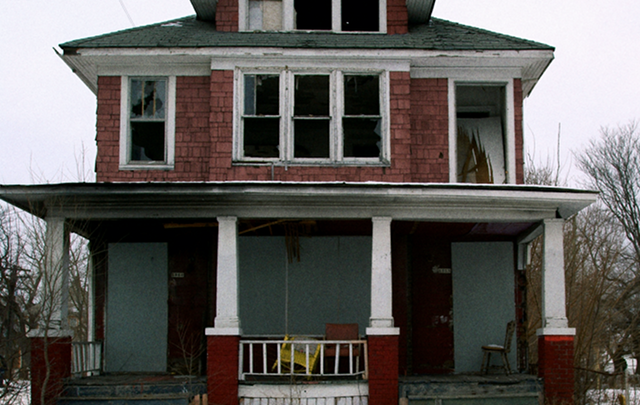
Housing in America typically lasts a long time. In 2015, 13% of all housing units were built prior to 1940 and 56% were built prior to 1980—compared to 40% in Japan—according to American Community Survey data.
This durability has benefits: Durable housing is resistant to extreme weather, can serve as a store of wealth, and makes the filtering process—when older housing filters down to people with lower incomes through market transactions—a viable source of low-income housing. But durability also has drawbacks that may be harming the U.S. economy.
Economists have linked urban decline to the durability of housing. When cities experience a large negative productivity shock—e.g. Detroit and the automobile industry—a lot of the shock is manifested in the form of declining home prices rather than population loss.
This happens because homes disappear slowly. As employment opportunities disappear and home prices decline, those most able to move—often higher-income, more educated people—do so. They leave their homes behind, but the still-livable-but-now-much-cheaper homes attract lower-skill people who are less connected to the labor market. This changes the skill composition of the city’s workforce and contributes to further decline.
There’s a sort of implicit bias in thinking about structures that more durable is better. We see this in statements like, “They don’t build them like they used to.” Clearly the high quality and durability of prewar housing and commercial architecture contributes to their being incredibly in demand.
Yet we see that a lot of postwar is in a sort of “sour spot”. It’s durable enough to be around, but flimsy enough that it’s hard to justify investing in fixing it up. It’s sort of the difference between masonry structures vs. wood frame. The latter are more likely to end up demolished in my experience – though large numbers of high quality brick buildings have met the wrecking ball in places like St. Louis.
Also, with changing tastes over time housing and commercial typologies have tended to fall into disfavor and wander in the wilderness. Some ultimately find new fans – say the mid-century “Atomic ranch” style homes – but many do not and end up as costly redevelopment liabilities.
Perhaps a better way to think about housing the 21st century is a fixed lifecycle design. I’ve floated this idea before. Why not have some cradle to cradle type design where the end of life removal and recycling of the building is built into the initial design and construction, with the end of the building lifecycle as planned as the beginning. Right now if you need to demolish an old house, it can be an expensive proposition.
Perhaps, as with things like waste motor oil, the people who sell houses up front should also be responsible for their end of life disposal and recycling if it comes to that.
This would fit with our shorter product lifecycles for things like technology. Unlike grandmother’s old console TV or that brown AT&T telephone handset, we don’t expect things to last forever anymore.
It would be interesting to see some creating thinking and development in this regard.
from Aaron M. Renn
http://www.urbanophile.com/2017/08/22/is-building-to-last-one-of-the-problems-with-housing/
No comments:
Post a Comment